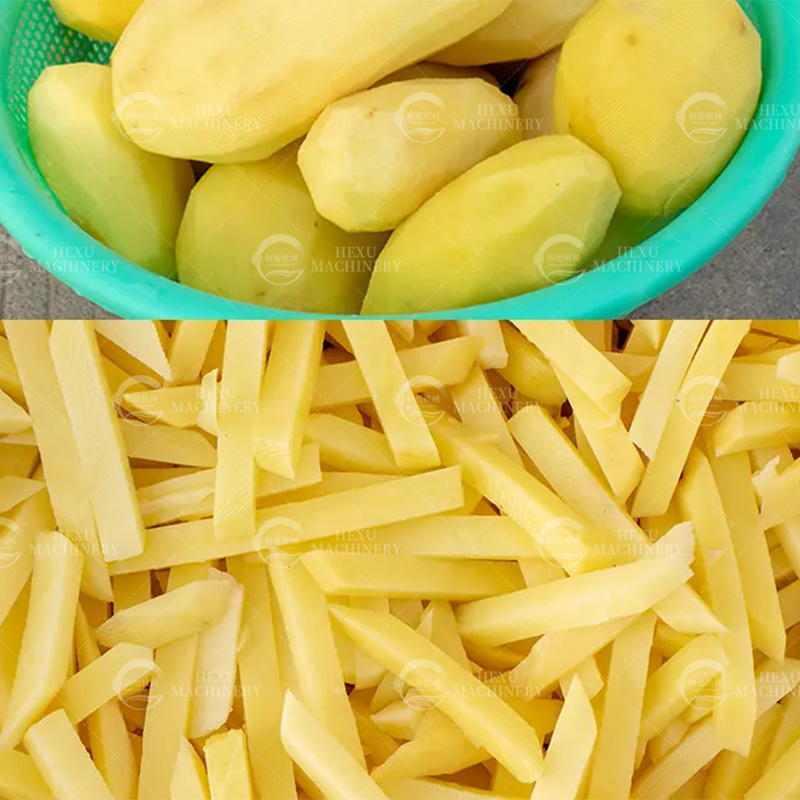
French fries, a globally beloved fast food, owe their massive market demand to the rapid growth of the deep-processing industry. Behind this booming sector, food processing machinery and technology serve as the driving forces propelling the industry forward.
1. Potato Washing and Peeling – The First Step
The first crucial step in fry production is washing and peeling the potatoes. Traditional manual methods are inefficient and result in high waste. In contrast, modern potato washing and peeling machines use high-pressure water jets and specialized friction devices to clean and peel large quantities of potatoes in a short time. These machines help retain the nutritional value and integrity of the potatoes, laying a solid foundation for the subsequent processing stages. By implementing this technology, raw material processing costs are significantly reduced, and production capacity is greatly enhanced, ensuring large-scale manufacturing.
2. Precision Cutting and Pre-Treatment
Once cleaned and peeled, the potatoes move on to the cutting process. High-precision cutting machines play a key role here, using specialized blades to ensure uniform thickness with minimal deviation. The uniformity of fries is critical, as it directly affects heat distribution during frying, impacting both texture and taste.
After cutting, the fries undergo a bubbling washing process to remove starch and impurities. They are then briefly blanched to partially cook the surface, enhancing their crispiness. Following this, a drying machine rapidly cools the potatoes and removes excess moisture. A vibrating sieve then filters out broken or undersized pieces before the fries proceed to the frying stage.
3. Frying – The Key to Flavor and Texture
Frying is the most crucial step in giving fries their signature taste and texture. Modern vacuum low-temperature frying machines have become the industry’s preferred choice. Unlike traditional high-temperature frying, vacuum frying operates at lower temperatures, allowing moisture in the potatoes to evaporate quickly, forming a porous structure. This process not only preserves the nutritional value of the potatoes but also reduces oil absorption, making the fries healthier. Additionally, intelligent temperature and oil control systems ensure precise, consistent frying results, aligning with modern consumers' demand for healthier food options.
4. De-Oiling and Freezing
After frying, the fries are transferred via conveyor belts to the de-oiling section, where high-pressure air rapidly cools them and removes excess surface oil. The fries are then sent to a freezing machine for quick freezing, transforming them into firm, semi-finished frozen fries, ready for distribution.
5. Automated Packaging and Quality Assurance
In the final stage, automated packaging machines accurately weigh and pack the fries, injecting protective gases such as nitrogen to extend shelf life. Labels with production dates and traceability codes, powered by coding and digital management systems, ensure full product traceability, enhancing consumer safety.
Finally, the packaged fries undergo metal detection for quality assurance before being shipped to the market.
Conclusion
The continuous innovation of food processing machinery and technology is driving the growth of the French fry industry. From raw material preparation to final packaging, each technological advancement enhances efficiency, improves product quality, and meets market demands. As technology progresses, the industry is expected to move towards even more efficient, healthier, and smarter production methods, bringing more delicious and innovative products to consumers worldwide.



